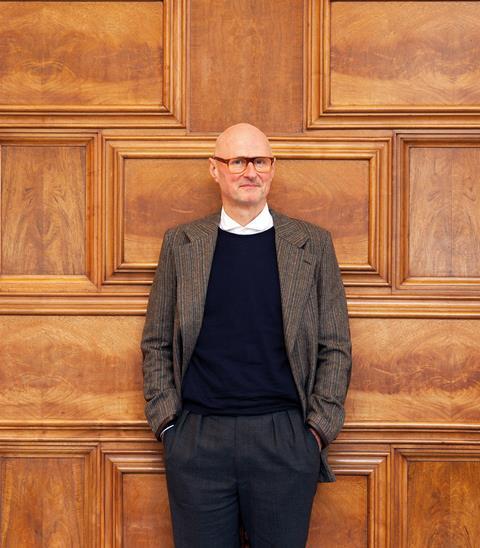The RIBA also says all existing blocks above 18m with single staircases should be refurbished with evacuation lifts
Architects’ body the RIBA and seven other built environment groups have called on the government to lower the threshold of the proposed single staircase ban in residential blocks from 30m to 18m.
The institute has written a joint letter signed by groups including the Royal Institution of Chartered Surveyors and the National Fire Chiefs Council to the housing secretary Michael Gove calling for the fire safety requirement to be strengthened.
RIBA has also called for existing residential buildings over 18m with single staircases to be refurbished with evacuation lifts, sprinklers and centrally addressable fire alarm systems, and for sprinklers to be standard in all settings where vulnerable people live. The call come despite the growing evidence of the turmoil being caused to residential developers even by the existing proposals.
The government is currently consulting on the rule, first announced in December last year, which would require second staircases in all new residential buildings above 30m, or around 10 storeys.

It is already in place in London, where mayor Sadiq Khan has said that all planning applications for schemes above 30m must include second staircases before being signed off by the Greater London Authority.
Lowering the requirement to 18m, the threshold which has been used in Scotland for the past four years, would mean all schemes in the UK above six storeys would require a second means of escape.
The joint letter said an 18m rule would be implementing what it believes to be best practice, improving safety for occupants, harmonise standards with the wider regulatory environment and “better reflect the reality of a post-Grenfell world”.
The institute’s president Simon Allford said decisive action to make buildings “as safe as is reasonably possible” is long overdue.
“Five years have passed since the fire at Grenfell Tower, and still we must make the case and take bolder action to help prevent further avoidable tragedies,” he said.
“We urge the government to improve fire safety standards - and clarity on appropriate staircase design and provision is essential.”
Allford highlighted the greater numbers of people after the 2017 Grenfell fire that are now evacuating blocks in the event of a fire rather than following the traditional “stay put” guidance for tall buildings.
Between 1 April 2019 and 31 March 2022, there were 154 cases where 10 or more people evacuated from a block of flats of a minimum of six storeys in London. This amounted to nearly 8,500 people choosing to evacuate buildings rather than ‘stay put’ before the arrival of the London Fire Brigade during an incident.
>> See also Berkeley to shift towards low-rise build if single staircase ban goes ahead
>> See also Why Peabody wants more info from government to tackle second staircase dilemma
The letter’s other signatories were the Chartered Institute of Building, the Housing Learning and Improvement Network, Disability Rights UK, Inclusion London and Cladding (Leaseholder Disability Action Group).
RIBA has long called for clarity on staircase design and more stringent fire safety requirements in buildings. The institute has relaxed its recommendation for second staircases, having previously urged the government to mandate a threshold of 11m, or around four storeys.
But lowering the threshold to 18m would cause further significant disruption to developers and planning authorities, which have already been hit by Khan’s abrupt adoption of the 30m rule in February.
Following that move, housing association Peabody has said it will need to redesign 20 tower schemes in the capital over 30m, some of which had already been approved for planning, while housebuilder Berkeley has said it will focus on low-rise developments in future.
This week Housing Today reported that a 1,100-home housing scheme in Marylebone had been redesigned by architect Bell Phillips in response to the government’s December proposal for a 30m rule.
The Church Street scheme, which will be presented to Westminster council’s planning committee next week, has bulkier massing and dramatically altered housing tenures following the rejig.











No comments yet